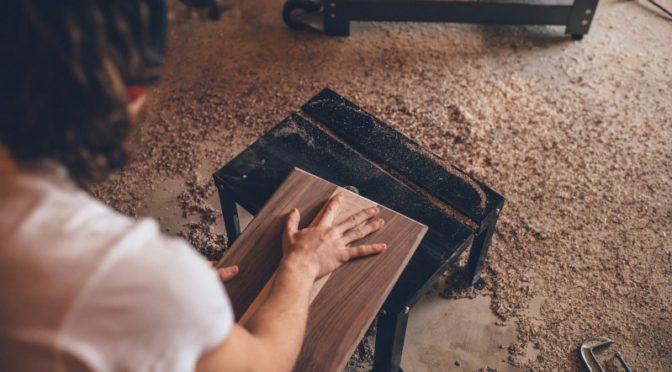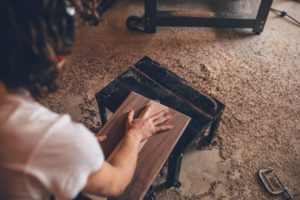
Brazilian hardwood flooring is one of the hottest trends in bare flooring right now. However, if you’re debating between Brazilian wood and domestic hardwoods (or even engineered woods), you might be wondering what the big deal is, and if you’re going to get something magical from wood grown in Brazil that you won’t get from a range of other exotic hardwoods, including those sourced from countries in Asia, Africa, or much closer to home in Canada. Today we’ll take a look at Brazilian wood flooring, considering species, strength, sustainability, pricing, maintenance, and how it compares to engineered hardwood.
What’s the difference between exotic and domestic hardwoods, and does it matter?

If you’re mainly interested in durability, you’re going to want Brazilian hardwood flooring over anything you can find domestically, simply because some of the hardest and most dense woods in the world are only found in Brazil.
Domestic woods refer to woods that come from North America, with the US and Canada in particular, while exotic refers to hardwoods that hail from any other part of the world. That said, it’s rather dated to refer to woods as exotic or domestic, as we live in a globalized economy where everything comes from everywhere.
Examples of domestic woods include Red Oak, Hickory, Cherry, White Oak, Pine, Maple, and Birch. All of these woods are hard, but they don’t have the Janka hardness ratings of the top South American hardwoods.
Which Brazilian hardwood species exist, and how do they differ?
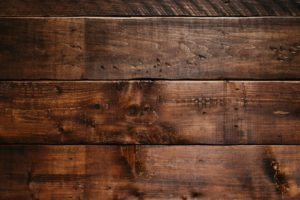
The main South American wood species are Jatoba, Cumaru, Tigerwood, and Ipe. Each is also known by variety of names, and each is highly durable; the main differences are in color, price, and grain patterns. Jatoba, for example, is commonly called Brazilian Cherry. It has a reddish brown hue. Cumaru is commonly called Brazilian teak and is honey-colored. Tigerwood, commonly called Brazilian Koa, is a dramatic, orange-striped wood; its distinctive look has made it a favorite among acoustic guitar manufacturers in search of exotic woods. Ipe is also called Brazilian walnut and ironwood, and is the hardest of the Brazilian woods. It’s also the most expensive. Its color is a deep, rich brown. It’s dense enough to use untreated if you want, and is also found in outdoor decks due to how resistant it is to rot and wear.
Is Brazilian hardwood sustainable and environmentally responsible?

People commonly write us with concerns about buying Brazilian hardwood and supporting deforestation or clear-cutting the process. The bad news is that this is where most South American wood used to come from. The good news is that things have changed, and it’s easy to buy sustainably harvested wood these days. To ensure you’re supporting companies that practice sustainable forestry, look for a tree logo by the Forest Stewardship Council, or FSC, on the company’s flyers and websites before buying from them. If you want to be extra sure, visit the FSC’s search engine yourself to look for the name of the company.
Can I afford hardwood from Brazil, and why is it so expensive?

As with most things in life, if you want high-end features, you’re going to pay high-end prices. This is true for Brazilian hardwood. While you can buy Cumaru for as cheap as $5 per square foot, most of what you find on the market will cost more; for example, Jatoba almost always starts at $6 or $7 minimum.
However, keep in mind that, as with most things in life that require human labor, the humanistic approach isn’t to try to spend as little as possible; if you want workers to be paid living wages for cutting down the trees that make your hardwood floors, you’ve got to be willing to pay a little more to make it possible. The biggest bargains are often the cause of the biggest exploitations, and the Brazilian lumber industry is not known for ethical business practices (although the same could be said for many industries in the US).
Should I consider Brazilian engineered hardwood?
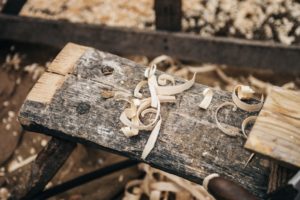
While it might be tempting to consider engineered wood flooring, Brazilian-style, as a way of getting your Brazilian hardwood for cheap, we wouldn’t recommend it for the same reason we don’t recommend it for domestic hardwoods. While the visual quality is identical at first, it’s still ultimately the difference between something gold and something gilded: once the veneer is gone, you’re dealing with plywood. In other words, you’re not going to get the durability of Brazilian hardwood by buying Brazilian engineered wood.
Do you need special vacuums to clean or maintain Brazil-grown hardwood?
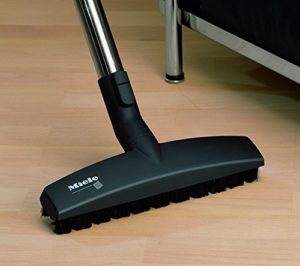
Perhaps the best news about Brazilian hardwood is that you don’t need any special tricks to clean or maintain it; you can treat it the way you would any other wooden floor. That said, to keep it polished while cleaning it effectively, we recommend a vacuum with a Parquet head. A Parquet head will remove dirt and fur while polishing the floor instead of simply blowing dust around due to air currents.
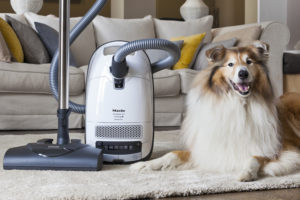
Beyond a Parquet head, we also recommend buying a vacuum with an electric brush head. You won’t need it to keep your hardwood clean, but you will need it if you want the flexibility to clean any pile or style or carpet. Statistically, few people exclusively use hardwood flooring in their homes, and even fewer people have Brazilian wood everywhere without any carpeted flooring. The problem is that few vacuums include both cleaning heads. The solution is in vacuums like the Miele Complete C3 Cat & Dog (reviewed here and here) and Miele Compact C2 Electro+ (reviewed here and here), both of which include Parquet and powered brush heads to make it easy to clean every floor on the market, and every floor in your home.
![]() You can buy the Miele Complete C3 Cat & Dog here on Amazon or buy the Miele Compact C2 Electro+ here.
You can buy the Miele Complete C3 Cat & Dog here on Amazon or buy the Miele Compact C2 Electro+ here.
![]() Canadians can buy the Miele C3 Cat & Dog here or buy the Compact Electro+ here.
Canadians can buy the Miele C3 Cat & Dog here or buy the Compact Electro+ here.
 If you find our research on PMC helpful, you can follow our efforts to keep maniacally reviewing home cleaning tools by shopping through our links above. We promise to keep fighting the good fight against every horror children, animals, and grown, yet messy humans can inflict upon a clean home.
If you find our research on PMC helpful, you can follow our efforts to keep maniacally reviewing home cleaning tools by shopping through our links above. We promise to keep fighting the good fight against every horror children, animals, and grown, yet messy humans can inflict upon a clean home.

